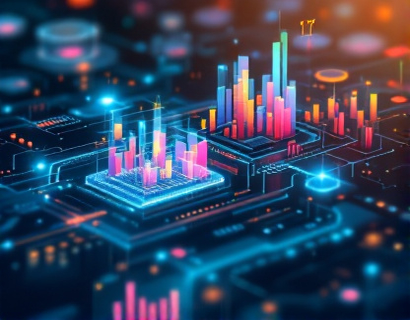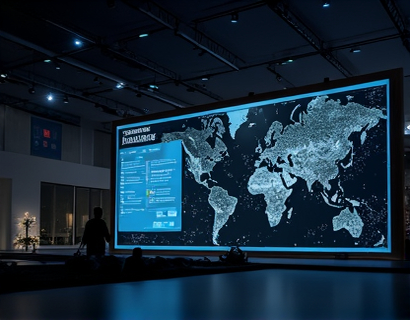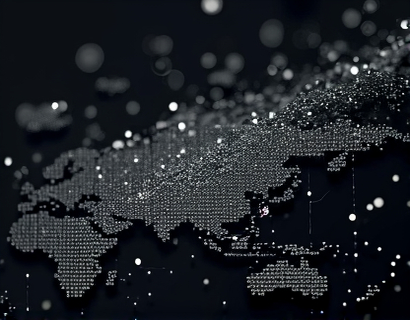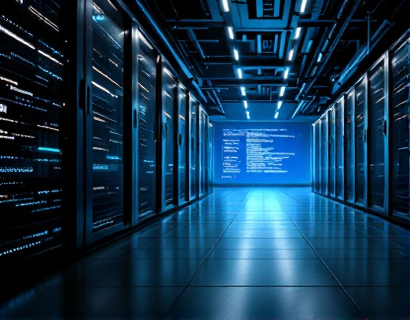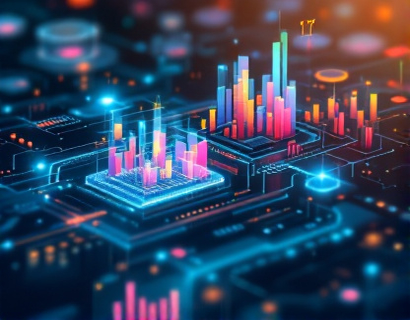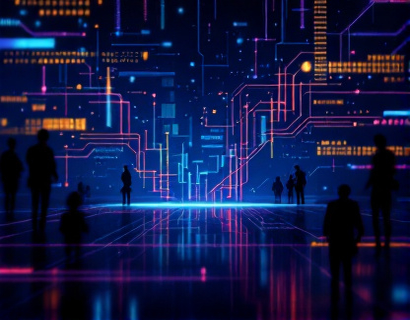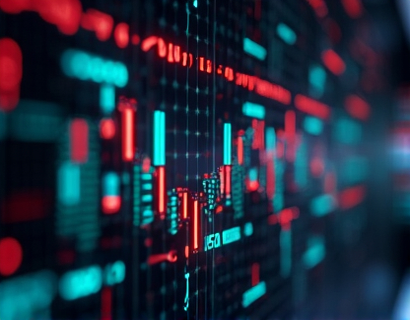Next-Gen QR Codes: Transforming Business and Social Media Engagement
In the rapidly evolving digital landscape, businesses and social media managers are constantly seeking innovative ways to enhance engagement and streamline information sharing. One such technology that has emerged as a game-changer is the next-generation QR Code. These advanced codes are not just a simple upgrade from their predecessors; they offer a suite of features that can significantly elevate how brands interact with their audience.
Understanding Next-Gen QR Codes
Next-gen QR Codes, also known as enhanced or intelligent QR Codes, go beyond the basic functionality of their earlier versions. They are designed with modern needs in mind, offering greater flexibility, security, and interactivity. These codes can store a vast amount of data, including URLs, text, contact information, and even multimedia content. The key advantage lies in their ability to be customized and optimized for specific use cases, making them highly versatile tools for digital marketing and business communication.
Customization Options
One of the most significant improvements in next-gen QR Codes is the level of customization available. Unlike standard QR Codes, which have a fixed shape and color, next-gen codes can be tailored to match a brand's identity. This includes changing the color, shape, and even the image within the code. For instance, a company can design a QR Code that resembles its logo or fits seamlessly into its marketing materials. This not only enhances visual appeal but also reinforces brand recognition.
Dynamic Content Integration
Next-gen QR Codes can be linked to dynamic content, which means the information they direct users to can be updated in real-time. This is particularly useful for businesses that need to frequently change links, such as promotions, event details, or product information. Instead of creating multiple QR Codes for different versions of content, a single dynamic code can be updated as needed, saving time and resources.
Enhanced Security Features
Security is a critical concern in digital interactions, and next-gen QR Codes address this by incorporating advanced security measures. These codes can include encryption and authentication protocols to ensure that the data they direct users to is safe and trustworthy. This is especially important for sensitive information such as financial data or personal identification details. By using secure QR Codes, businesses can build trust with their audience and protect against potential security threats.
Anti-Counterfeiting Measures
Another security feature of next-gen QR Codes is their ability to prevent counterfeiting. These codes can be designed with unique identifiers and watermarks that are difficult to replicate. This makes them ideal for applications where authenticity is paramount, such as in the luxury goods industry or for verifying the legitimacy of products and services.
Improved User Experience
The user experience is a crucial factor in the success of any digital tool, and next-gen QR Codes are no exception. These codes are optimized for quick and accurate scanning, reducing the time users spend waiting for the code to be read. This efficiency translates to higher engagement rates and a smoother user experience. Additionally, the ability to integrate multimedia content, such as videos and augmented reality experiences, can make the interaction more engaging and memorable.
Seamless Integration with Digital Platforms
Next-gen QR Codes are designed to integrate seamlessly with various digital platforms, including social media, websites, and mobile apps. This integration allows for a cohesive and consistent user experience across different channels. For example, a QR Code placed in a physical advertisement can direct users to a specific landing page on a brand's website or a social media post, creating a seamless flow from offline to online interactions.
Boosting Social Media Engagement
Social media platforms are increasingly embracing QR Codes as a means to enhance user engagement. Next-gen QR Codes can be used to create interactive and immersive experiences that go beyond static posts. For instance, a brand can place a QR Code in a print ad that, when scanned, leads users to a live streaming event, a behind-the-scenes video, or an interactive poll. This not only increases the likelihood of users engaging with the content but also extends the time they spend interacting with the brand.
Augmented Reality Experiences
One of the most exciting applications of next-gen QR Codes is their ability to trigger augmented reality (AR) experiences. By scanning a QR Code, users can access AR content that overlays digital information onto the real world. This technology can be used to create interactive product demos, virtual try-ons, and educational experiences. For example, a furniture store can use AR to let customers see how a piece of furniture would look in their home before making a purchase.
Streamlining Business Operations
For businesses, next-gen QR Codes offer a range of operational benefits. They can be used to simplify various processes, from customer check-in and payments to inventory management and employee access control. For instance, a restaurant can use QR Codes for table reservations, menu viewing, and payment processing, reducing the need for physical menus and cash registers. This not only streamlines operations but also enhances the customer experience by providing a modern and efficient service.
Contactless Interactions
In the post-pandemic world, contactless interactions have become a norm. Next-gen QR Codes facilitate contactless transactions and communications, aligning perfectly with current health and safety standards. Customers can use their smartphones to scan QR Codes for payments, coupons, and information, minimizing physical contact and improving hygiene. This is particularly beneficial for businesses in sectors like retail, hospitality, and healthcare.
Data Collection and Analysis
Next-gen QR Codes can also serve as powerful tools for data collection and analysis. By tracking scans and user interactions, businesses can gain valuable insights into customer behavior and preferences. This data can be used to optimize marketing strategies, improve product offerings, and personalize customer experiences. For example, a retailer can analyze which QR Codes are scanned most frequently to determine which products or promotions are most appealing to customers.
Enhanced Analytics Capabilities
The analytics capabilities of next-gen QR Codes are more sophisticated than those of traditional codes. They can provide detailed reports on scan locations, times, and user demographics. This level of granularity allows businesses to make data-driven decisions and tailor their strategies accordingly. For instance, a brand can identify peak scanning times and adjust its marketing efforts to maximize reach during these periods.
Environmental Sustainability
In an era where sustainability is a key concern, next-gen QR Codes offer an eco-friendly alternative to traditional printing methods. Digital QR Codes can replace paper-based materials, reducing waste and the environmental impact of printing and distribution. This not only aligns with corporate social responsibility goals but also resonates with environmentally conscious consumers.
Reduced Material Costs
By using QR Codes instead of physical materials, businesses can significantly reduce costs associated with printing, storage, and distribution. This cost savings can be redirected towards other areas of the business, such as marketing or product development. Additionally, the digital nature of QR Codes means they can be easily updated and distributed without the need for physical reprints.
Case Studies and Success Stories
Several businesses have already leveraged next-gen QR Codes to achieve remarkable results. For example, a travel agency used QR Codes on brochures to direct users to virtual tour experiences and booking pages, resulting in a 40% increase in bookings. Another retail brand integrated QR Codes into their packaging, linking to exclusive online content and promotions, which led to a 25% rise in online sales.
Real-World Applications
In the healthcare sector, hospitals have implemented QR Codes on patient wristbands to streamline access to medical records and streamline check-in processes. This not only improves efficiency but also enhances patient care by ensuring that medical staff have immediate access to critical information.
A educational institution used QR Codes in textbooks to provide students with additional learning resources, such as video lectures and interactive quizzes. This enhanced the learning experience and increased student engagement.
Future Trends and Innovations
The future of next-gen QR Codes looks promising, with ongoing innovations set to further enhance their capabilities. One area of development is the integration of blockchain technology, which can provide even higher levels of security and transparency. Additionally, the combination of QR Codes with 5G technology is expected to enable faster and more reliable connections, opening up new possibilities for real-time data exchange and interactive experiences.
Expanding Use Cases
As the technology matures, the use cases for next-gen QR Codes are likely to expand into new industries and applications. From smart cities using QR Codes for public services to the integration of QR Codes in wearable technology, the potential is vast. The key will be to continue innovating and adapting these codes to meet the evolving needs of businesses and consumers.

















